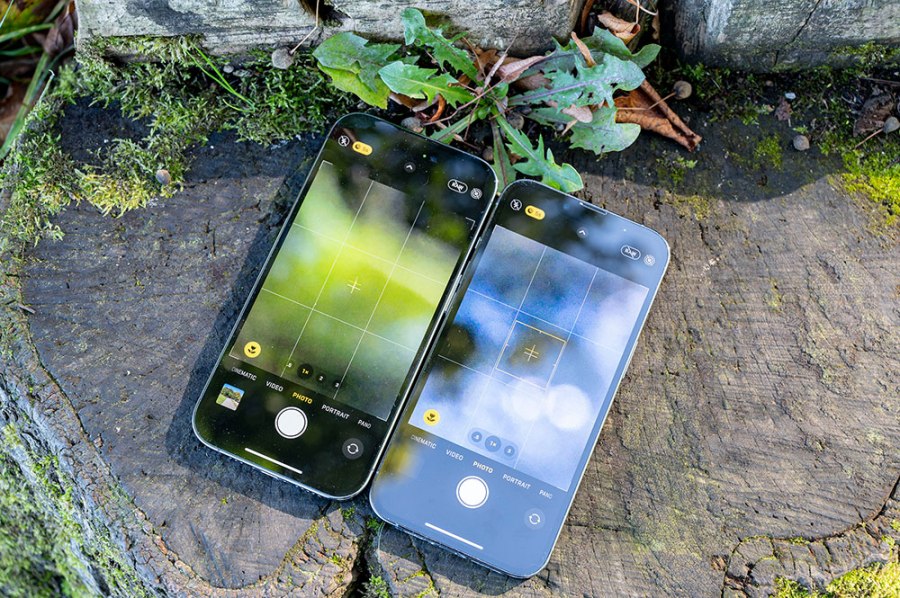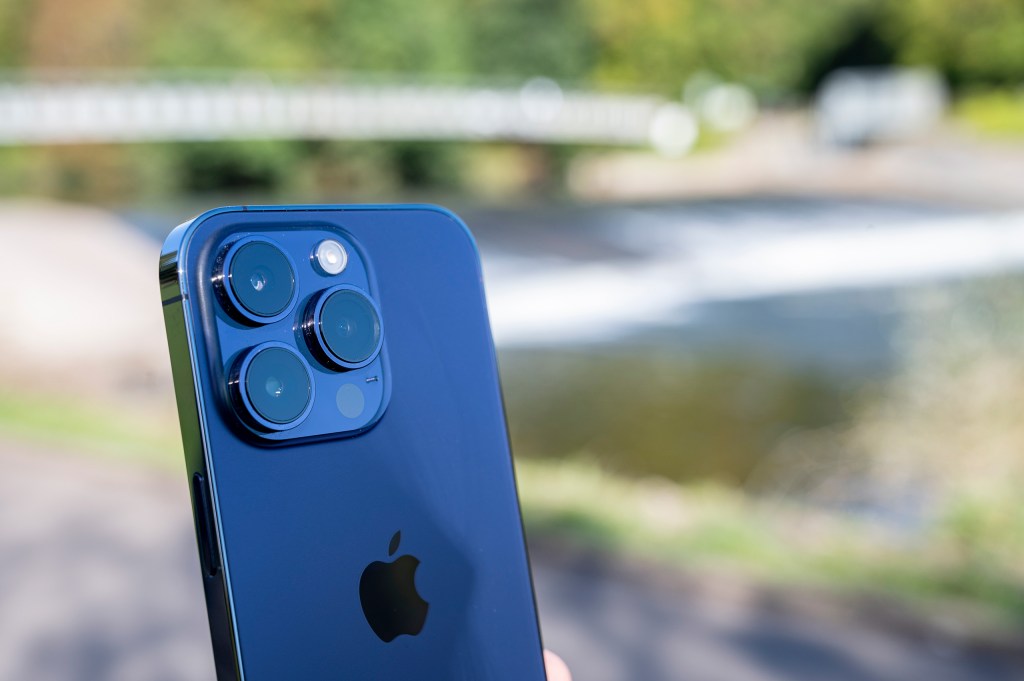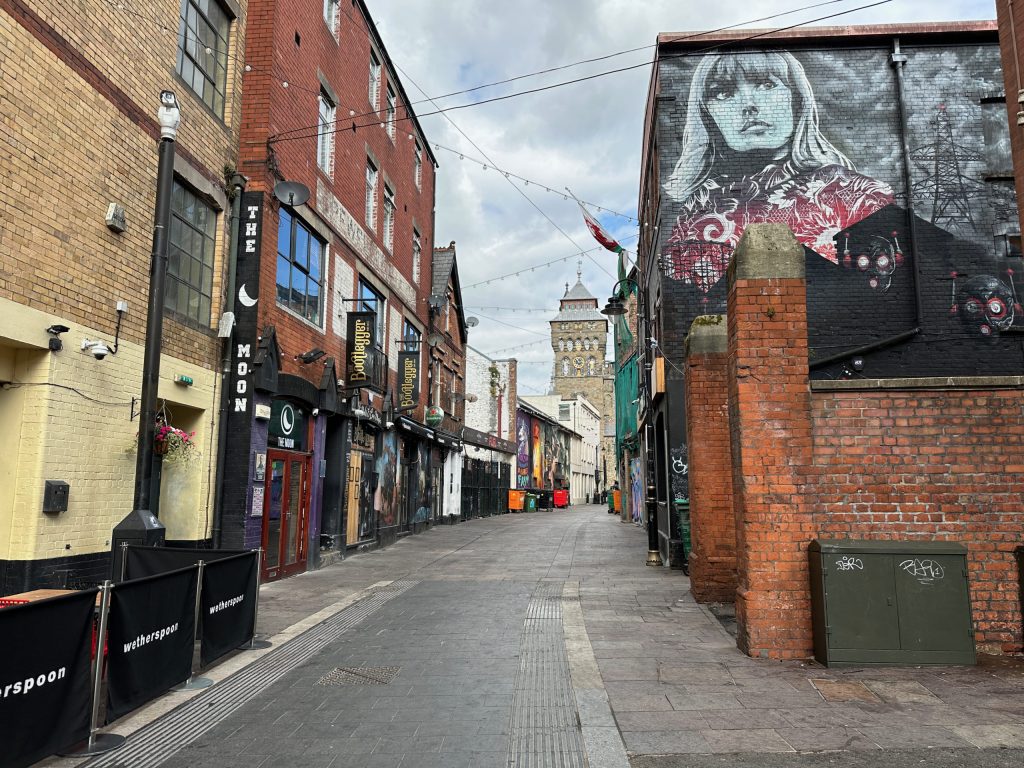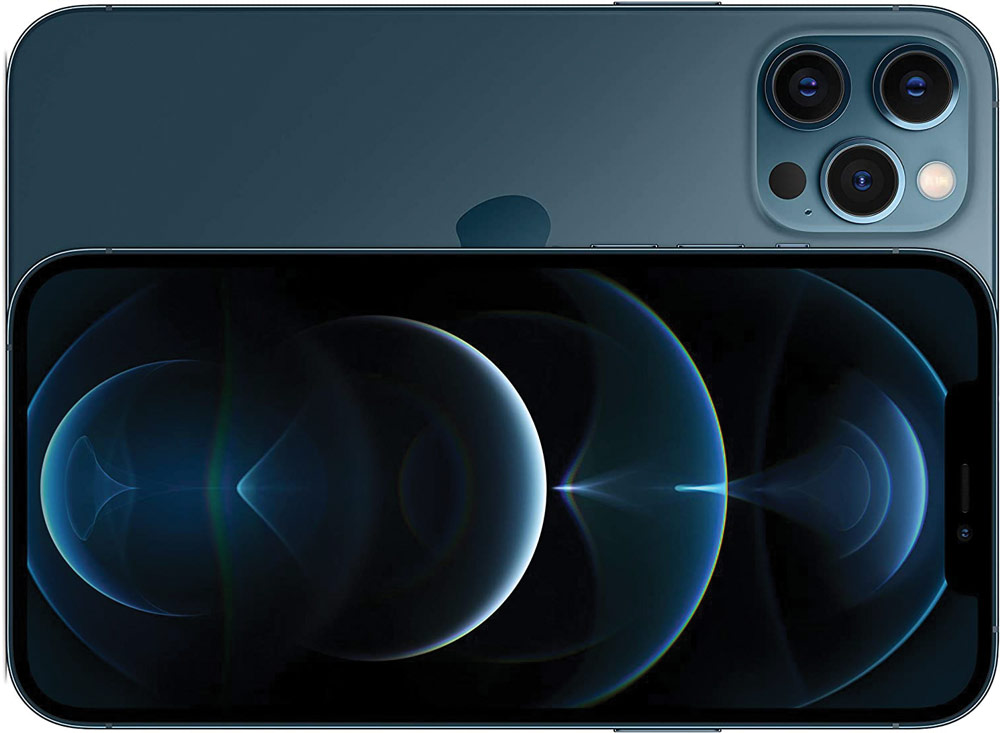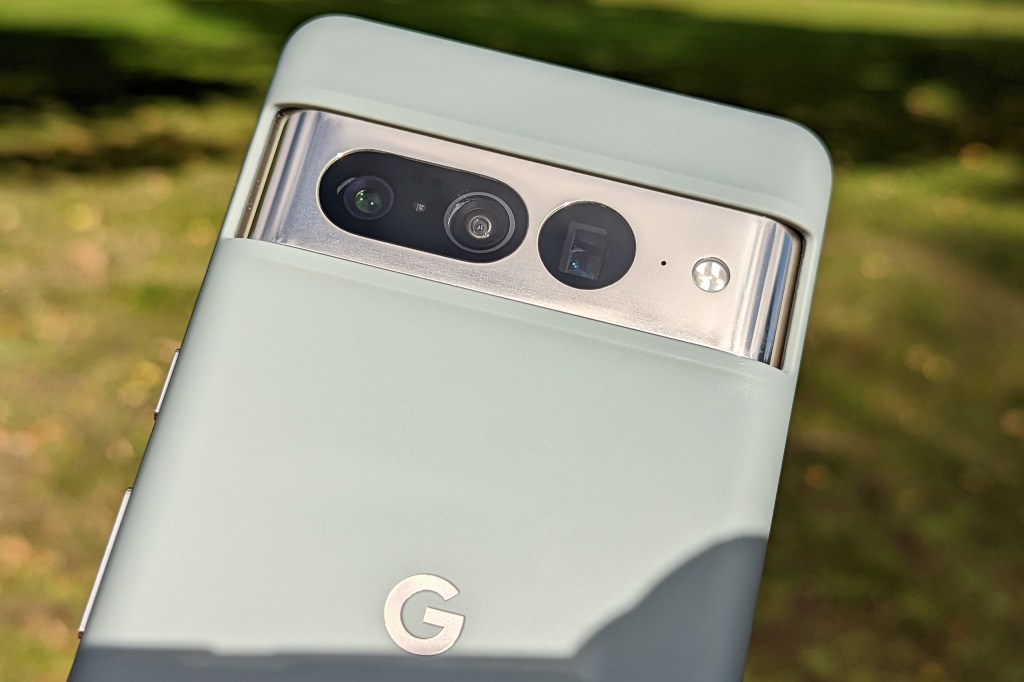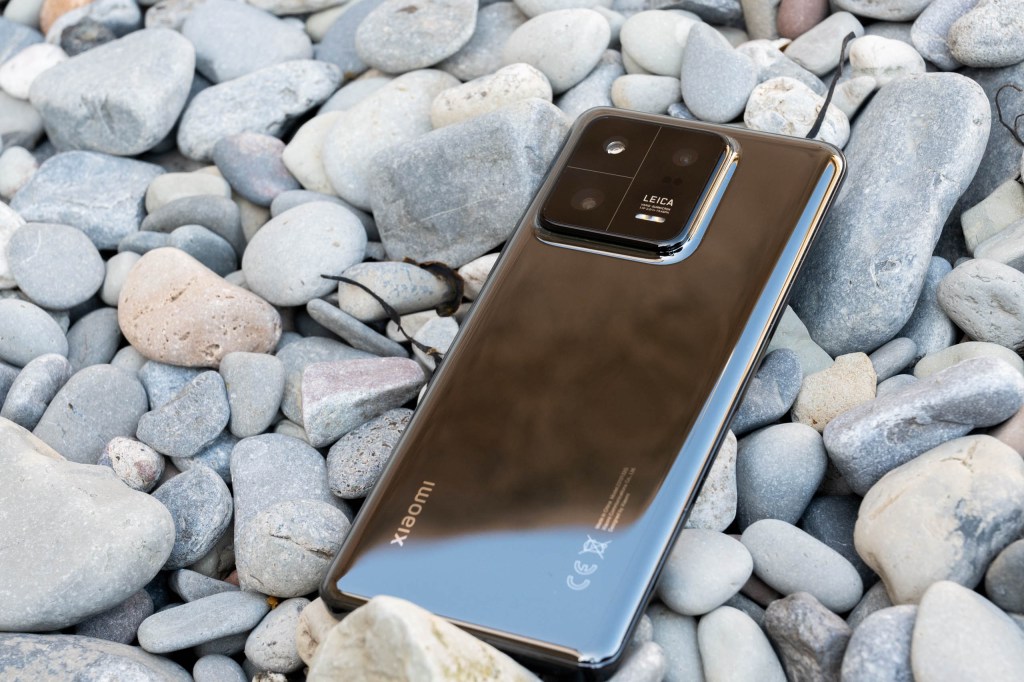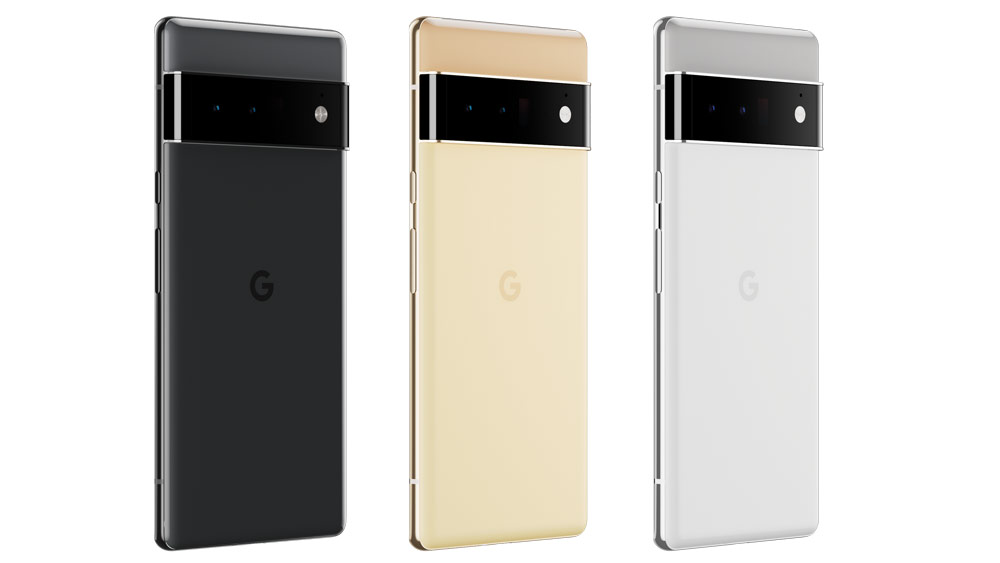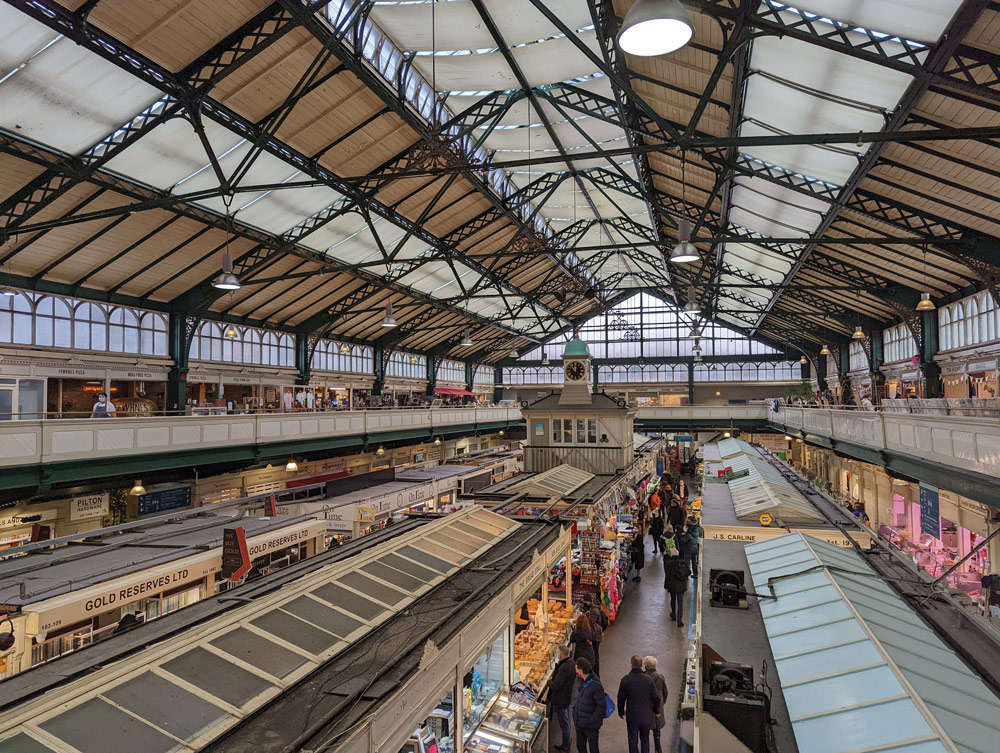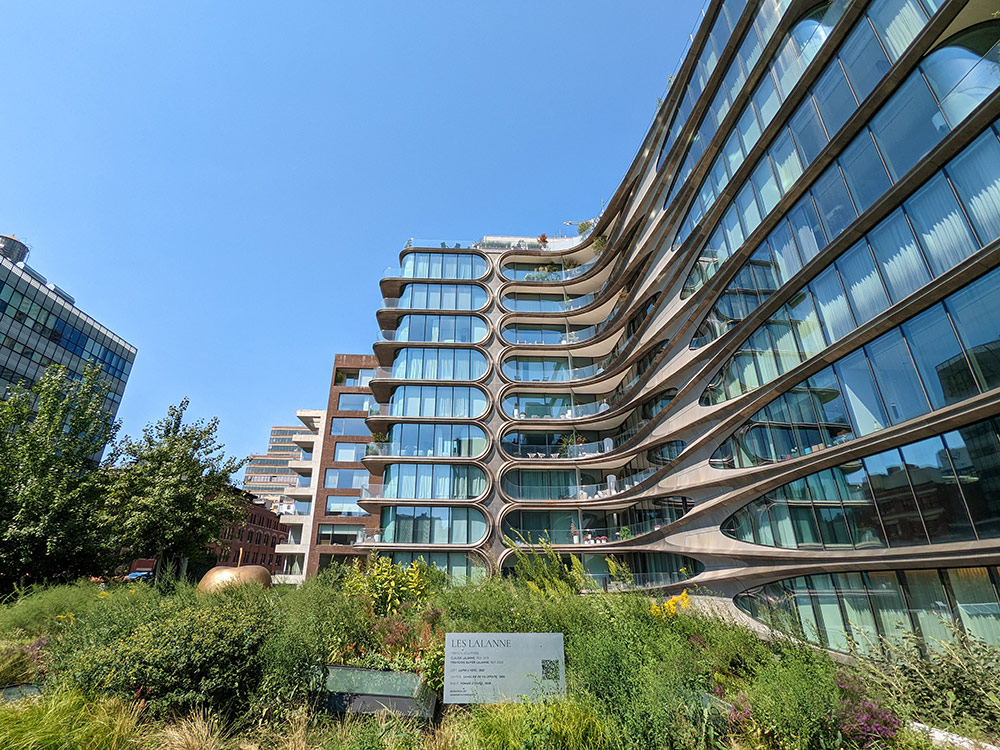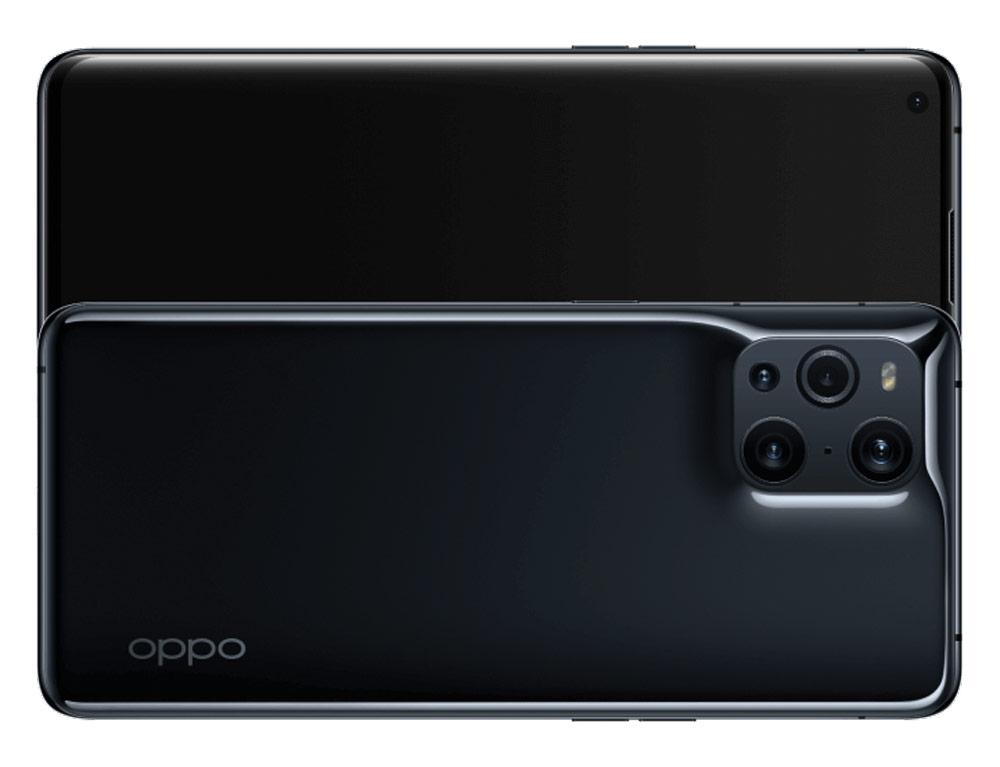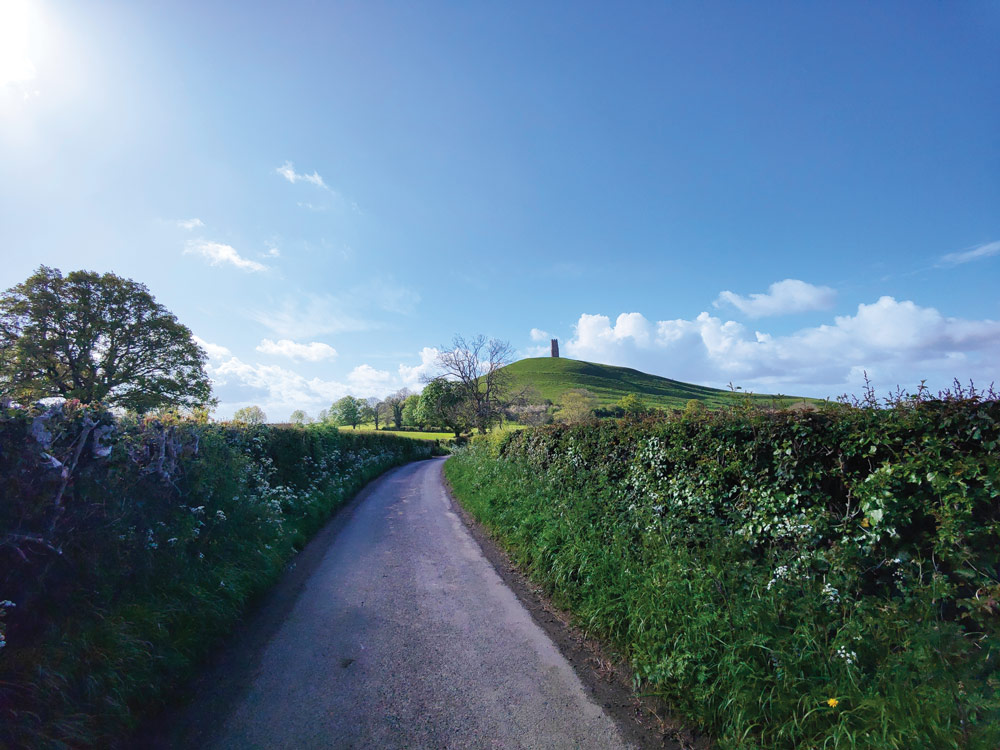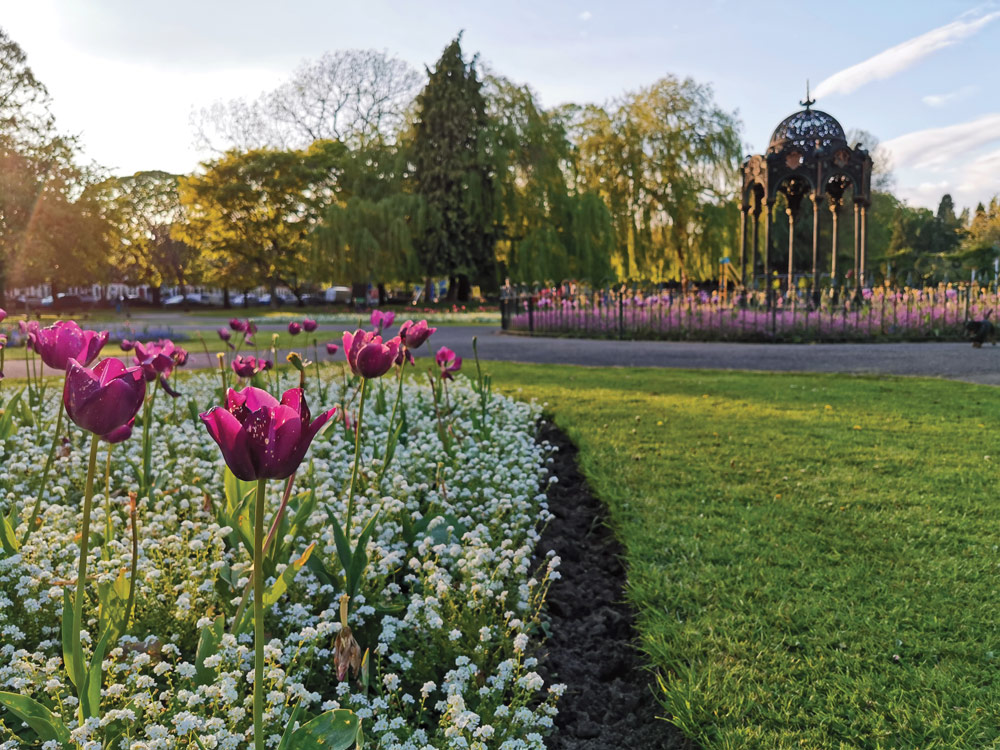To get the latest and best smartphones, you’ll generally need to pay a pretty penny. Top-line models from the big names can cost $1000/£1000 or more – with some coming in at eye-watering prices. That can be a lot to bear, especially if you’ve already spent a load of money on your “real” camera gear.
What’s worse, smartphones have a much swifter release cycle than cameras. So that top-line model you splashed the cash on usually only stays current for around 12 months. However, the flipside of that is if you’re prepared to wait and pick up last year’s phone (or older), then you can get a much better deal without having to compromise too much on hardware and features.
To save even more money, it pays to look at the second-hand market. You might be surprised at the bargains you can find. With lots of people keen to ditch their existing phones as soon as new one comes out, you’ll often find a flurry of availability close to release dates. On occasion, you might even find this year’s current models sold on quickly by those who get bored easily!
By buying second-hand, you’re not just saving cash – you’re also helping to save the planet. Well, a bit. Rather than an electronic device lingering in a drawer, or worse, ending up in landfill, keeping them in circulation rather than adding to the billions of brand new models sold can only be a good thing.
If you have your own old gear lying around waiting to be traded in, you can find second-hand phones via private sellers on eBay, Facebook Marketplace and Gumtree, but we’d always exercise caution when dealing with this kind of outlet. For more peace of mind, you can try going directly to the manufacturer, or second-hand retailers such as Music Magpie or Envirofone. Even Amazon sells second-hand now too.
There’s a lot to take in when it comes to choosing the best smartphone, never mind adding navigating around second-hand. That is where we come in. I’ve selected some of the best older models that you can pick up second-hand right now, but you’ll also find some tips on what to look for when shopping for used models.
Quick list
Looking for the best deal on premium camera phones? Not only will you find the best used camera phones, but you’ll also find some of the best used camera phone deals, as our ‘Buy now’ buttons are setup to automatically take you to the best prices, from trusted retailers, plus you’ll also find a list of other retailers below each phone, so you can find the right deal for you.
Best used smartphones under $800/£800
Best used smartphones under $500/£500
- Honor Magic 5 Pro – Buy now
- iPhone 12 Pro Max – Buy now
- Google Pixel 7 Pro – Buy now
- Samsung S22 Ultra – Buy now
- Xiaomi 13 Pro – Buy now
- Samsung S21 Ultra – Buy now
- OPPO Reno 8 Pro – Buy now
Best used smartphones under $300/£300
- Google Pixel 6 Pro – Buy now
- Google Pixel 6a – Buy now
- Oppo Find X3 Pro – Buy now
- Huawei P30 Pro – Buy now
Why you can trust Amateur Photographer
We spend many hours testing every product we recommend, in detail, in a variety of situations and shooting scenarios, and only use experts for our reviews, so you can be sure that you’re getting the best products. Find out more about our expert writers.
Best used smartphones under $800/£800
iPhone 14 Pro Max
Price at launch: $1099/£1099 (256GB model)
Typical used prices:$520-$770/£560-£670 (256GB model)
Amateur Photographer verdict
A stylish powerhouse with a triple-lens setup and great image quality, however, even second hand it is still quite pricey- Stylish design
- Easy to use
- Triple lens setup
- 4K 60p video
- No native ‘pro’ or ‘advanced’ camera mode
iPhones tend to hold their value much better than their Android counterparts, so you’ll never see the biggest savings when it comes to Apple devices. However, you’ll still save a hefty chunk of change compared to the latest model, with second-hand prices of the 2022 iPhone 14 Pro Max being as cheap as $520/£560 in some places. You’ll likely also find that you’ll get a decent price for it should you decide to sell it on again at some point, too.
With the iPhone 14 Pro Max, you get a triple-lens setup, that includes an ultra-wide lens, a standard lens and a 3x telephoto lens. The newer iPhone 16 Pro Max also has a 5x lens – but I found that I preferred the 3x option anyway, so it’s no loss not to have it. Otherwise, much of the specification has remained the same, or seen only a gentle upgrade – so paying a premium just to have the latest isn’t strictly necessary. Image quality between the two is very similar, too.
If you prefer a smaller phone, it’s worth noting that the standard sized iPhone 14 Pro has the same camera specification as its bigger brother, but you’ll get it at an even cheaper price ($465-$687 / £500-£620 typical prices).
The native camera app for the iPhone 14 Pro Max includes features such as Night mode and Portrait mode, and while it doesn’t have the automatic portrait recognition feature as found on the iPhone 15 Pro and 16 Pro series, it’s still a neat and sensible app to get your head around.
For the cheapest prices, you’ll be looking at something in “Fair” condition – which usually means that it works perfectly well but it may have some visible wear and tear on the body. Those with more pristine casings will set you back closer to £900, but, considering that’s still a saving of £200 on the latest model, it’s a still a good deal.
Try stepping back even further to the iPhone 13 Pro Max if your budget is tighter still – there are deals starting at £450.
Read our full iPhone 14 Pro review here.
Also consider:
- iPhone 14 Pro
- iPhone 13 Pro/Max
- iPhone 12 Pro/ Max
Samsung Galaxy S23 Ultra
Price at launch: $1199 / £1249 (256GB model)
Typical used prices: $500-$650 / £440-£499 (256GB model)
Amateur Photographer verdict
A fantastic all-rounder that copes well in a variety of situations and comes with a well-featured native camera app- Excellent display
- Four lenses
- 8K video
- Versatile native camera app
- Awkward size
- Only a gentle upgrade from predecessor
Stepping back two generations from the latest Samsung Galaxy S25 Ultra, we’ve got the S23 Ultra. Due to how quickly prices drop for Samsung models compared to iPhones, you can already pick this up for around half the price it would have been at new, showing things do indeed come to those who wait.
And the better news is that the S23 Ultra is still one of the best smartphones you can currently buy, regardless of it not being current. It boasts a quad-camera setup, with one of them being a whopping 200MP, alongside an ultra-wide and two different zoom lenses – one offering 3x and another offering 10x. Other high-end specifications include 8K video, a fantastic display and a super-fast processor.
More importantly, of course, we found it delivered fantastic image quality in a wide range of different shooting situations. It’s also got a nicely comprehensive shooting app, with an array of different modes and functions. Another neat feature of this series is the included stylus, which you can use to remotely trigger the shutter release – useful for group selfies and so on.
Low light and portrait shooting is very good, while there’s an array of AI features that make it a fantastic all-rounder. Samsung recently rolled out a firmware upgrade that brings it in line with its current model, so you shouldn’t necessarily feel short-changed by opting for older.
The big screen (6.8-inches) won’t be to everybody’s tastes. If you prefer something smaller, consider the Samsung S23 – it doesn’t have same camera setup as the S23 Ultra, but it’s still very good, and at 6.1-inches, it won’t be such a problem for your pocket. It’s also cheaper.
If you don’t mind the larger sized models, then you can also consider the S22 Ultra and the S21 Ultra. They’re now three-four generations old but make for perfectly fine camera phones, with prices starting at as little as £300.
Read our full review of the Samsung Galaxy S23 Ultra here.
Also consider:
Best used smartphones under $500/£500
Honor Magic 5 Pro
Price at launch: £949
Typical used prices: £315-£450
Amateur Photographer verdict
Honor’s flagship model delivers excellent image quality from all three lenses even in low light.- 3x 50MP sensors
- Excellent screen
- No 8K video
- 100x digital zoom a gimmick
There’s a decent reduction available for the Magic 5 Pro – though the bargain is not quite so great as with some of the other flagships here.
Still, you get a great performing device for a good chunk off its original price. It is two generations back from the current model, the Honor Magic 7 Pro, but it still boasts some headline specifications to be proud of.
That includes a triple camera array, with all three having 50MP and comprising of a wide, ultrawide and telephoto option. It’s also got a 6.8” screen, which is what we see elsewhere on the likes of the Samsung S23/S24 Ultra range and is great for looking at your images either in composition or playback.
I think this is also one of the most stylish-looking models in our round-up here, with an attractive and unusual design compared to most – if that’s something that appeals to you it might be worth paying a little more for.
There’s an easy-to-use native camera app with an array of different shooting modes that all perform well. The general image quality I found to be very pleasing on the whole.
Read our full Honor Magic 5 Pro review here.
Also consider:
- Honor Magic 6 Pro
- Honor Magic 5 Lite
- Honor Magic 4 Pro
iPhone 12 Pro Max
Price at launch: $1,099 / £1,099
Typical used prices: $300-$500 / £350-490
Amateur Photographer verdict
Ideal if you are looking for a camera phone with a triple-lens setup, manageable size, and native camera app that features dedicated night and portrait modes- Night portrait mode
- Triple lens setup
- No manual control / Pro mode
Some hefty savings can be made on a refurbished iPhone. They tend to hold their value much better than Android equivalents, so going back two or more generations is where you’ll find the best savings.
The latest model is the iPhone 16 Pro Max, so going for the iPhone 14 Pro Max, is a good option – but it’s the iPhone 12 Pro we’d recommend for those on a strict budget.
The iPhone 12 Pro Max has a triple-lens setup: an ultra-wide lens, a standard lens and a short telephoto. The smaller iPhone 12 Pro also has a triple-lens array, but the telephoto lens is slightly shorter, and the sensor behind the main lens is a little smaller. It’s still a good option as a phone of more manageable size.
The native camera app includes features such as Night mode and Portrait mode, but there’s not much in the way of manual control. Luckily there are dozens of apps you can download if that’s something you really want. The cheapest prices for the iPhone 12 Pro Max come from devices found in ‘fair’ condition, rising up to around $600 / £475 if you pick one up directly from Apple and get a full 12-month refurbished warranty. That’s still a whopper of a saving compared to the latest model, which will set you back $ 999 / £1,199.
Also consider:
- iPhone 13 Pro Max
- iPhone 12
- iPhone 11 Pro
Google Pixel 7 Pro
Price at launch: £850
Typical used prices: $250-$330 / £270-£380
Amateur Photographer verdict
An old flagship at mid range price that competes with brand new phones. It delivers excellent image quality, and the bright and detailed screen is great for viewing and editing your images- New 5x telephoto camera
- Great performance from all cameras
- New macro mode
- No Pro or manual mode
- HDR can’t be turned off unless you shoot raw
- Fixed focus selfie camera
You can find the Pixel 7 Pro at incredibly cheap prices on the second-hand market. It’s almost certainly true that it’s better than most similarly priced brand-new budget or mid-range phones, too.
It was a flagship at launch, and as such we found it had excellent image quality – so much so that it can easily compete with the latest competitors, too, and isn’t too far behind its direct replacement, the Pixel 8 Pro, either.
We’ve got a triple lens setup, including two high resolution (50MP and 48MP) sensors comprising wide, ultrawide and telephoto. There’s also other great features such as a bright and detailed screen, and a macro mode that made its debut for the Pixel series with this model.
The camera app is neat and streamlined, and although there has been some new functionality added to the Pixel 8 Pro, there’s not a huge step change between the two, while image quality from the new model is better – but not enough to scoff at the huge savings available here.

In fairness, we’ve already seen the price of the Pixel 8 Pro drop dramatically – even at brand new it’s £300 cheaper than when it first went on sale, but if you could get something for under £270 then you’d be doing very well. Expect conditions to be on the “fair” side only for that price – but you can get “excellent” condition devices for as little as £331 too, so it’s worth shopping around.
For those that want something smaller, there’s the standard Pixel 7, which has a 6.3” screen, compared to the 6.7” screen of the 7 Pro, but you’ll be sacrificing the telephoto camera – perhaps this is no big deal if you’re not likely to use it all that much anyway (it’s the one I use least on any smartphone). Pick up Pixel 7s for as little as £225 second-hand. You can also get some of Google’s budget options second-hand, even the newest models, with options such as the Pixel 8a available for around £379.
Read our full Google Pixel 7 Pro review here
Also consider:
Samsung S22 Ultra
- Price at launch: $1,199 / £1,149
- Typical used prices: $320-$560 / £320-500
Amateur Photographer verdict
It’s been the best of the best just a few years ago, and now it is more affordable than ever.- Impressive 4 lens array
- Pro / manual mode
- 8K video
- Less RAM than S21 Ultra
- No microSD card expansion
- No macro mode
The Samsung S22 Ultra was among the best smartphones released in 2022, if not the best. However, with prices starting at $1,199 / £1149, it was an expensive buy. But it has recently seen a price drop following the Samsung S23 Ultra and can be bought for prices starting at half its original price.
In our Samsung S23 Ultra vs Samsung S22 Ultra comparison article found that the S22 Ultra still holds its ground against the larger, newer phone, despite the S23 Ultra’s 200MP main sensor and 10x zoom. The S22 Ultra has an excellent quad camera setup that includes a 108MP main camera, an ultra wide camera and telephoto camera but despite a well-featured native camera app, doesn’t have a macro mode. Video-wise, this smartphone can shoot up to 8K video.
Read our Samsung Galaxy S22 Ultra review.
Also consider
Xiaomi 13 Pro
Price at launch: $845 / £1099
Typical used prices: $300-$350 / £220-£470
Amateur Photographer verdict
It’s packed with a good range of features, and having three 50MP sensors, including a one-inch main one, puts it ahead of most rivals – while the collaboration with Leica seems to have paid off well- Raw shooting and pro mode
- Quick charging
- Large sensor
- Oversaturated images in some circumstances
Now we’ll take a look at some of the smaller names in the market. Sometimes these devices can be picked up very cheaply as they don’t have the same appeal as the bigger brands. However, since fewer of them make it to market in the first place, it can often be tricky to get the very best deals.
By my reckoning, the very best smartphone for photographers at the moment is the Xiaomi 15 Ultra. But, it is a staggering $999/£1299. If you don’t want to part with that kind of cash, one alternative is the Xiaomi 13 Pro models also available second-hand, priced at around $320/£380, and also represents great value.
You get a triple-lens setup, which have been co-engineered with Leica. We don’t need to tell you that Leica knows what it’s doing when it comes to quality lenses, but needless to say it’s a very good performer. There’s a wide, ultrawide and a floating telephoto lens which doubles up to be used for excellent macro performance. You also get a 32MP selfie camera, which is pretty rare among even flagship smartphones.
I was impressed with image quality across a range of scenarios, making it a strong competitor for the likes of the iPhones, Pixels and Samsung models also mentioned here. If you can get it for under $320/£300, then it’s a great deal.
If you want to stretch yourself further, the Xiaomi 13 Ultra is also available, and is even better. You should find one second hand for around £430 upwards. With that, you get a quad-camera setup, with all four being 50MP – something that we don’t generally see anywhere else. You also get a 32MP front camera again. Just like its successor, the 13 Ultra has a 1-inch type sensor, meaning you generally get superior image quality compared with the smaller sensors in the rest of the phones mentioned in this piece.
Read our full Xiaomi 13 Pro review here.
Also consider:
- Xiaomi 13 Ultra
- Xiaomi 12 Pro
Samsung S21 Ultra
- Price at launch: $1,199 / £1,149
- Typical used prices: $240 – $320/ £220-390
Amateur Photographer verdict
If you stick to the native focal lengths and don’t indulge in digital zoom, you’ll be rewarded with attractive-looking images under practically any lighting.- 4 cameras
- 108 MP sensor
- Large
- Front camera only 10 MP
The S21 Ultra is now four generations old. The S25 Ultra is now available, which goes some way to explaining the bargain prices you can find this one-time flagship model for.
We are big fans of the Samsung S series range, and the S21 Ultra impressed us hugely when it first appeared on the market. It features a four-camera setup, giving you a range of lenses from 13mm up to 240mm in equivalent focal length. It also boasts a 108-megapixel main sensor, and has a well-featured native camera app.
Being able to pick up a once class-leading smartphone such as this for under $250 / £300 is a fantastic deal, especially if you can find one which comes with a retailer warranty.
Read our original review of the Samsung S21 Ultra
Also consider:
Best used smartphones under $300/£300
Oppo Reno 8 Pro
Price at launch: £549
Typical used prices: £175-£225

Amateur Photographer verdict
A great budget phone with a good main camera, however, its appeal lies in the 32MP front camera that delivers excellent quality images, making the Reno 8 Pro an ideal phone for selfie enthusiasts.- Good main camera
- Good portrait and night modes
- Easy-to-use camera app
- Weak macro camera
- No optical stabilisation
Here’s another model that is available at proper bargain prices – not a surprise considering it started off at an affordable price from new in the first place. Still, I was able to find some for close to £200, with only a small bump in cost for those in “excellent” condition.
Now, as you might expect for that price, you don’t get the best camera setup in this group, but what you do get performs pretty well. There’s a 50MP main camera, which is joined by an 8MP ultrawide camera, and a 2MP macro camera. The front camera is 32MP, which is pretty good going for a budget device.
As with most Android phones, the native camera app interface is intuitive and easy to use, but also has a good range of additional options to choose from. Specialist modes, such as Night and Portrait, put in a pretty pleasing performance. It’s fair to say however that while the main 50MP camera delivers very good images, the other two don’t quite stack up – but if you’re looking for a total bargain you should be prepared for such compromises.
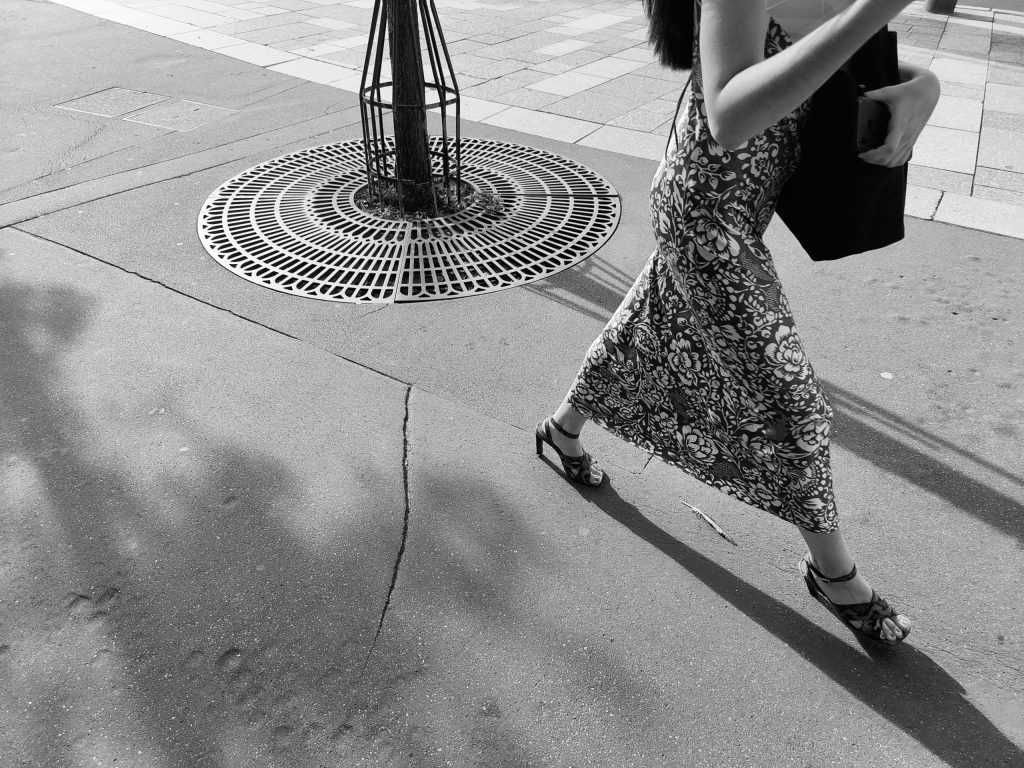
The selfie camera though puts in an excellent performance, so if that’s something you see yourself shooting a lot of (and why not!), then it could be worth considering for that alone.
Alternatively, you might be able to find newer models at a similar price, such as the Oppo Reno 11 Pro, or the Oppo Find X5 Pro at around the £250 mark second-hand too, which is worth looking out for – especially the latter, which we found to be very impressive.
Read our full Oppo Reno 8 Pro review.
Also consider:
- Oppo Find X5 Pro
- Oppo Reno 11 Pro
Google Pixel 6 Pro
- Price at launch: $899 / £849
- Typical used prices: $170-250 / £170-245
Amateur Photographer verdict
If you’re a keen photographer and want a device that will help you capture beautiful images in a range of scenarios, any time of day, the Pixel 6 Pro is very hard to beat.- Face unblur and Magic Eraser camera features.
- Large screen
- Below average battery life
Google’s Pixel phones always impress with high-quality imagery and a straightforward and easy-to-use app (although we’d like to see some kind of manual mode, please). You only have to go back one generation with the Pixel range to pick up something at an excellent price, with 2021’s Pixel 6 Pro available for as little as $230 / £250.
For your money, you get a triple-lens set-up, which includes a 50-megapixel main camera, as well as super-wide and telephoto (4x zoom) options. The 6 Pro delivers excellent pictures in a range of situations, particularly excelling in low light. Although it’s now been surpassed by the Pixel 7 Pro, most average users are unlikely to be able to spot too much of a difference between the two, making the saving even more tempting. Look for the standard Pixel 6 if your budget is even tighter.
Read our original review of the Google Pixel 6 Pro
Also consider:
- Google Pixel 6
- Google Pixel 5
Google Pixel 6a
- Price at launch: $314/£299
- Typical used prices: $120-180/£120-200
Amateur Photographer verdict
The Google Pixel 6a offers a great dual-camera system and, whilst it may not match the flagship smartphones, it comes very close to the performance, with excellent colours, exposure and dynamic range.- Affordable
- Astro photo mode
- No telephoto camera
- No dedicated macro mode
If you don’t need all the power of the Google Pro range, this is an excellent used budget choice – we named it one of our best budget smartphones after all.
Shop around and you can find it for around $200 which makes the Pixel 6a something of a bargain. The latest model in the line up is the Pixel 8, that sells around £380 with features like Best Take, Magic Editor, and Audio Magic Eraser, but if you shop around you can pick up the Pixel 7 Pro for under $350/£300.
Key specifications include a 12MP ultra-wide camera, f/2.2, 17mm equivalent, a 12MP wide camera, f/1.7, with optical image stabilisation, 27mm equivalent, and a 6.1inch OLED screen (2400×1080 pixels). So, if you can live without the Pixel 6’s 48MP camera with larger sensor and additional AI “motion” mode, the Pixel 6a is a very sound choice.
After all, most of the key photography features and image-processing algorithms remain the same for both models, with the Pixel 6a also coming with intelligent AI features including a ‘magic eraser’. This makes it a lot easier to remove unwanted objects from images, without having to faff about in Photoshop or a similar image-editing package.
Picture quality is very good considering the price, and although low-light performance isn’t as good as the Pixel 6 owing to the smaller sensor, it should be perfectly acceptable for many situations unless you are a compulsive pixel peeper.
You can also record video up to 4K resolution, and up to 60fps, with effective image stabilisation and decent low-light performance. There are also time-lapse, and slow-motion video options, with up to 4x and 8x slow-motion available, albeit at a reduced resolution. All in all, a powerful package considering the price and ‘budget’ classification.
- Google Pixel 5
- Oppo Find X3 Pro
Read our original review of the Google Pixel 6a
Oppo Find X3 Pro
- Price at launch: $1,374 / £1,099
- Typical used prices: $200-280 / £160-£235
Amateur Photographer verdict
The multi camera set up delivers good results. The dedicated close-up lens and ‘microscope’ mode will appeal to macro lovers.- Pro mode with manual control
- Macro lens
- Below average selfie camera
Another manufacturer that has been making waves lately is Oppo. The Find X3 Pro had a very high price-tag at launch, but it can now be picked up a couple of years later for as little as a third of the price, making it a bit of a bargain for the quality it provides.
The rear of the camera sees a triple-lens set-up, with one being a ‘standard’ lens, another being ultra-wide and finally a telephoto option. There’s a macro/close-up lens for picking out details in the admittedly slightly strange ‘microscope’ mode – you can place the phone on top of your subject to record it.
Overall, image quality is very good, with Night mode putting in a great performance. The native app has a range of functions, including an ‘Expert’ mode, which allows you to record in raw format and alter settings.
Also consider
- Oppo Reno 7 Pro
- Oppo Find X2 Pro
Huawei P30 Pro
- Price at launch: $899 / £899
- Typical used prices: $190-300/ £145-320
Amateur Photographer verdict
The Huawei P30 Pro shoots excellent photos and videos and performs exceptionally well in low light.- Triple lens set-up
- Very good low light performance
- Raw shooting only available in Pro mode
At one time, Huawei was the manufacturer to beat when it came to excellent cameras on smartphones. Its demise at the hands of a ban on newer devices accessing the Google Play store means that you’ll need to go older if you want to pick up something that’ll work in the way you expect it to.
The P30 Pro was the last of Huawei’s models to be able to access the Play store, and equally as importantly, it was capable of producing excellent photos and videos, meaning it still stands up very well today. It has a triple-lens array on the back, including a standard, ultrawide and a telephoto lens.
Night mode is excellent, while the native camera app is very well-featured. Considering you can pick one up for under $200 / £200 if you shop around, it’s an absolute bargain and it still gives the latest models a run for their money.
Also consider
- Huawei P20 Pro
- Huawei Mate 20 Pro
Where to find second-hand smartphones
Make sure you take a good look around different options for finding used smartphones. That way, you’ll be able to compare prices to make sure you’re getting a good dealer. You might find you get a better “deal” from private sellers, but make sure you do your homework so you don’t end up with a dud. Take a look at our top tips for staying safe when buying, but here’s some places you can look at.
- Backmarket
- Amazon
- Mazuma Mobile
- Music Magpie
- Envirofone
- CEX
- Network providers (e.g. EE, o2, Vodafone, Three, Giffgaff)
- Manufacturers (e.g. Apple, Samsung, Google)
- eBay (buyer beware)
- Gumtree (buyer beware)
- Facebook marketplace (buyer beware)
Second-hand vs refurbished: are they the same?
It’s important to note that second-hand and refurbished aren’t interchangeable terms. Second-hand generally means buying directly from the previous owner, via online auction websites like eBay. While you can sometimes find great deals doing this, the risk is greater as you won’t be covered by additional warranties, nor the same legal guarantees as when buying from a reputable firm.
Refurbished phones are still second-hand, but are bought from a manufacturer, retailer or official reseller. These phones will usually have been assessed by an expert before sale, given a condition rating (for example ‘like new’) and often come with an extended warranty. Some refurbished models are restored to the point that you’d never know it had a previous owner. You should also expect to have all the correct accessories supplied with a refurbished phone.
The trade-off for this is – usually – a higher price. But, as a rule, we’d suggest spending a little more for a high-quality product. Refurbished phones purchased from a retailer are covered in the UK by the Consumer Rights Act 2015. This allows 30 days to return the phone if it turns out to be of unsatisfactory quality. On top of that, if the phone develops a fault within six months, the retailer must prove it wasn’t there when it was bought.
Buying second-hand from private sellers (i.e. individuals on eBay) doesn’t carry the same protection. A listing can’t be misleading (for example claiming the phone will switch on when it doesn’t) – but you don’t have the six-month ‘fault’ window. In either case, the manufacturer warranty (usually 12-24 months) may still apply if the device you have bought is younger than that.
Our 3 top tips for buying used smartphones:
1. Opt for manufacturer support
Make sure any model you buy is still supported by the manufacturer. That probably won’t be a problem if you only go back one, or even two, generations, but older smartphones eventually stop being supported. This can leave you prone to security issues, but it can also affect usability if you can’t get the latest operating system. Check the manufacturer’s website for a list of currently supported devices.
2. Choose unlocked
Choose ‘unlocked’ models if you can. This means they aren’t tied to a particular network provider, allowing you to use it with your existing contract. Alternatively, you could look for those that are locked to the one you’re already on – sometimes you’ll get a bargain that way.
3. Check batteries
Older models which have been very heavily used might have batteries that don’t last very well. You can try to find out if the battery has been replaced – or – if it’s possible to replace it yourself if you find it’s not holding charge.

Online marketplace tips:
Use PayPal
It’s almost certainly a bad idea to hand over large sums of cash for a second-hand device, especially to strangers. Use PayPal or your credit card for protection from potentially dubious online operators.
Check private sellers
Make sure you’re vigilant when dealing with any private seller. Check the seller rating, examine the listing closely for details about condition, and be sure to ask question if something doesn’t seem right, or a key piece of information is missing.
Avoid generic pictures
Look closely at a listing’s picture. Is the seller using “generic” pictures readily available from the manufacturer’s website, or do they look like genuine images? If it’s the former it could indicate a problem with the smartphone – or it could potentially not exist at all. Look for pictures which show the device working (screen switched on too)
Be wary of cosmetic damage
Pay attention to information about any cosmetic damage. It might be fine, but it could be something which affects image quality – such as a scratch across the lens – so it’s something to be mindful of.
Check warranties and repairs
Is the original warranty still in date? If the phone you’re buying isn’t too old – it might be. Also ask the seller if they’ve made any replacements or repairs while it was in their possession.
Scrutinise price
Is the price too good to be true? Compare any model against other similar models in the same condition. If the one you’ve seen is significantly cheaper and it’s not obvious why, be cautious.
Tips for buying from retail shops:
Go for best you can afford
The condition rating of a device should be noted. Always go for the best you can afford, but cosmetic damage is something that should be considered if it has no impact on the image quality. Anything with a defective battery is worth considering if you can replace it easily or cheaply.
Ask for additional guarantees
Can you get an additional guarantee or warranty? This is why it can be wise to spend a bit more money and get something from a specialist retailer, rather than a private seller, as this extra peace of mind can come with what you’re buying.
How we test smartphones
We review smartphones from the perspective of choosing a smartphone for its photography and camera performance, so we test every phone by looking at what it offers in terms of the cameras and what features are included for photography and video, and how it performs in real world use in a variety of different shooting situations.
We test each camera on the phone, whether that’s the ultra-wide angle, the main camera, telephoto camera(s), and selfie camera, and use the phone for photography in a range of lighting conditions, including low-light, where camera phones can struggle. We also look at specialist shooting modes on offer, whether that’s the portrait modes or AI features, as well as look at how good the overall phone is, in terms of battery life, screen and build quality.
Now you know the best used camera phones for photography, check out our guide to the best camera phone accessories and best camera phone tripods and mounts.
Related articles:
- The best smartphone apps for photography
- iPhone vs Android: Which is better for photography?
- How to take amazing portraits on a smartphone
- Using smartphones for street photography
- Opinion: Cameras will always be better than smartphones

